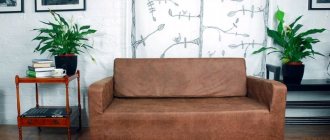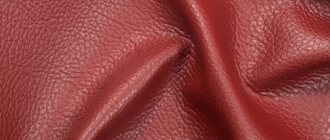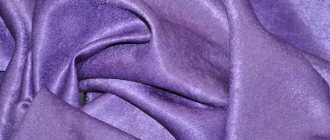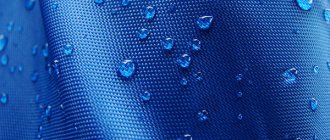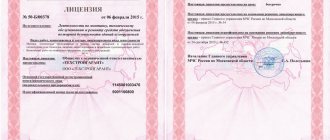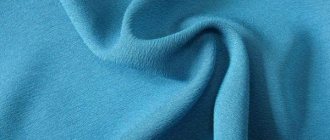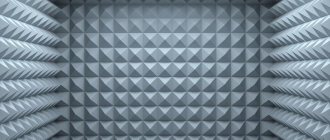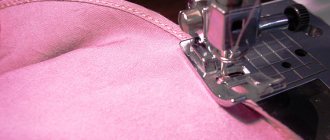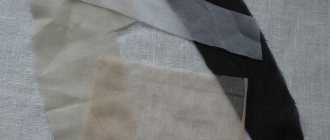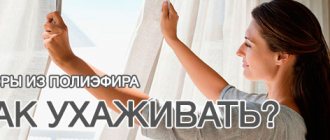External effects of velor fabric
In order to choose which velor is best for upholstering a sofa, you need to take into account the purpose of the room in which the furniture is installed and the style of its design. The material may have a surface:
- smooth - with uniform vertical pile;
- shaped - with a pronounced texture, which is formed by vertically and obliquely located pile, having different heights and shades;
- embossed - with a pattern that is formed when the pile is laid in different directions;
- plain-dyed - with uniform coloring.
Velor furniture upholstery looks best in rooms with interiors in classic, baroque, gothic, empire, and rococo styles. The most spectacular colors are deep emerald, thick sapphire, rich ruby, turquoise, azure. In the styles of minimalism, loft, and hi-tech, sofas with velor upholstery look tasteless.
For upholstery of sofas, they choose furniture fabric, which differs from suit fabrics in its thick pile. A modern type of velor used for upholstering sofas is micro-velor, which has excellent performance characteristics. Its basis is microfiber, which prevents the attraction of dust and dirt, fading under the influence of ultraviolet radiation, and resistance to moisture.
Advantages and disadvantages
Microvelor is a popular furniture fabric. It has become popular due to its advantages:
- luxurious look at a relatively low cost;
- microvilli provide pleasant tactile sensations and comfort;
- exceptional practicality;
- hygiene;
- wide choice of colors and densities.
Microvelor allows you to implement any design solutions. It is available in various colors, monochromatic and multi-colored, with a pattern.
But the material also has disadvantages that you need to be aware of:
- absorption of odors;
- wide variation in quality.
Wanting to make textiles even more accessible, manufacturers began to produce them thin, without Teflon impregnation and of relatively low quality. There are varieties with abrasion resistance of 20,000 cycles. However, even this indicator remains quite good.
Pros and cons of using velor for sofa upholstery
Advantages of velor upholstery:
- aesthetics;
- elasticity, which provides resistance to deformation and accelerated wear even in areas with bends;
- for fabrics with synthetic and mixed fibers - color fastness to ultraviolet radiation, practicality, ease of care;
- better antistatic characteristics compared to other long-pile fabrics;
- hypoallergenic.
A relative disadvantage of this material is its high cost, which is justified by its positive characteristics.
By appearance
- Smooth with a uniform fleecy front side. The pile is positioned clearly upward from the base.
- Shaped with an uneven surface smoothed in some places.
- Crash with dense pile and a visual bruised effect. Made from mixed natural, synthetic and artificial fibers: cotton, viscose, elastane and polyester, which makes up the majority.
- Corrugated or pleated with small folds along the fabric. Made from mixed synthetic fibers of polyamide, viscose, polyester in approximately equal parts with a small addition of elastane. Demanded for sewing women's dresses, skirts and tunics.
- Embossed, decorated with figuratively laid pile, forming patterns and ornaments.
How to care for a sofa with velor upholstery?
Caring for velor upholstery is not difficult if it is carried out regularly using a special brush or vacuum cleaner with a rubber nozzle strictly in the direction of the pile. For care, do not use fluffy rags, which can leave whitish spots on the fabric. It is not recommended to use powdered cleaning compounds, bleaches or products containing solvents.
Pollution cleaning technology:
- wet a microfiber cloth in a mild soap solution;
- Apply the solution to the contaminated area, rub the microfiber cloth in the direction of the pile without applying strong pressure;
- dry naturally.
The most resistant to all types of dirt and ultraviolet radiation is velor fabric coated with Teflon.
Velor sofas
- Advantages and disadvantages
- Which fabric is better?
- Which to choose?
- How to care for fabric?
- Options in the interior
- Reviews
Velor is often used as a material for furniture upholstery. Outwardly, it is very reminiscent of velvet, so velor sofas look very original and presentable. The modern range of these pieces of furniture is presented in a wide range, among which you can see models for every taste. They are very beautiful, practical and functional.
What to choose for sofa upholstery - chenille or velor?
Chenille is a durable furniture fabric with imitation twisted pile. For its production, synthetic fibers or mixed threads of synthetics and viscose are used. Acrylic fibers provide the material with special strength. The advantages of this material: softness and a feeling of warmth due to the fleecy surface, absence of wrinkles, resistance to foreign odors, cozy and presentable appearance.
Chenille is not resistant to animal claws and metal elements of clothing, which cause puffs to form on it. Therefore, in intensively used rooms, where children and pets are often present, velor, which is more durable and easier to care for, has performed better. In addition, chenille is poorly resistant to ultraviolet radiation. Chenille is a presentable fabric that is best used in high-status rooms.
Which fabric is better?
Basically, for upholstery of sofas, manufacturers use strong and durable materials, each of which has individual characteristics. Therefore, before making a choice in favor of one or another sofa upholstery, it is recommended to decide for what purpose it is being purchased, and only after that give preference to a specific type of fabric.
It must be remembered that a beautiful velor sofa can give the interior a special coziness. Each upholstery material has its own individual characteristics and differences that should be paid due attention. The most popular among the entire range are the following items:
- Flock. A relatively inexpensive material that is actively used for furniture upholstery. It is made of 65% polyester and 35% cotton. This is an ideal option for animal owners, since this fabric is easy to care for, easy to clean, does not fade, and is also hypoallergenic, waterproof, and wear-resistant. The material allows air to pass through well, preventing the accumulation of unpleasant odors and is very pleasant to the touch.
- Chenille. It has a chic appearance and is considered an exclusive upholstery material. It is hypoallergenic, resistant to adverse environmental factors and easy to clean. This fabric perfectly retains its original qualities and color for many years, as it does not deform at all and does not fade.
- Velours. Very delicate material with a soft velvety surface, which provides the most comfortable and cozy rest. This fabric is resistant to stretching, so it is often preferred to be used in complex furniture structures.
It is a little demanding to care for, but it can still be cleaned with a vacuum cleaner with a soft brush, as well as treated with special water-based products.
- Jacquard. It is an exquisite and noble material with incomparable strength and durability. In terms of cost, this upholstery fabric is much more expensive than others. It is often compared to a tapestry due to the presence of a pronounced relief pattern. The fabric can only be cleaned using the dry method.
- Matting. It has a very dense and durable texture with a fleecy surface. The design looks very much like a chess pattern. This fabric is made from cotton, polyester and acrylic, which indicates the impeccable quality of the material. In any interior, this upholstery looks as natural as possible.
- Tapestry. This is a well-known cotton fabric with a thick weave of threads. It is not so refined, but has decent quality indicators, such as wear resistance, practicality and good breathability. This material perfectly retains its original characteristics for many years.
- Microfiber It is considered a novelty among upholstery materials. Very strong, durable, perfectly retains its original color, fireproof and resistant to adverse factors. A good option for those with pets due to its resistance to claw snags.
Each of these upholstery materials is unique in its own way. Therefore, in the selection process it is necessary to take into account all the features of a particular specimen. After all, only a properly chosen soft sofa will delight its owners and others not only with its attractive appearance, but also with its comfort.
Velor or matting?
Matting is a durable natural material, consisting of 100% cotton, linen or wool threads. It has a rough texture, looks like burlap, and does not wrinkle. The advantage of this option is the budget cost. The matting fits organically into the interiors of ethno- and eco-styles.
This type of upholstery, unlike velor, is not suitable for formal interiors and does not withstand the claws of pets at all. To remove stubborn stains, you can use a sponge lightly moistened with soapy water. Basically, matting, which does not tolerate moisture and cleaning agents, is used in rooms where there are no pets or small children.
Comparison with other furniture fabrics
If you haven’t fully decided what kind of sofa you want, compare other upholstery options with velor.
What is better for a sofa: chenille or velor
Unlike velor, chenille is softer and more pleasant to the touch. The material repels odors and does not attract dust, but if you spill water on the surface, it will instantly be absorbed, forming stains.
In addition, chenille fades in the sun and is less wear-resistant. Any mechanical influences, for example, iron elements on clothing or animal claws, can create a snag and ruin the upholstery.
Velor or faux suede: which is better for a sofa?
Faux suede is made from a weave of cotton and polyester threads. The combination of these fibers gives the material unique characteristics: cotton adds softness and hypoallergenicity to the fabric, and polyester adds strength and wear resistance.
The service life of artificial suede is not affected by sunlight and other harmful factors. Just like velor, suede does not withstand exposure to moisture, and unlike it, it also does not tolerate animal claws or strong thorns.
In addition, it gets dirty quickly and costs more than velor.
What is better jacquard or velor for furniture?
Jacquard is an expensive material with a complex pattern obtained by a certain thread weaving technology. There are natural and synthetic. It has high performance characteristics, durable and wear-resistant. Unlike velor, jacquard is rougher and less pleasant to the body. However, such material is much more expensive.
Which is better - velor or matting for upholstery?
Matting is a dense and rough material. It is a fabric woven from dense threads in a checkerboard pattern.
It is characterized by maximum wear resistance and durability, but is rarely used for upholstery of upholstered furniture. Unlike velor, the material is less pleasant to the body due to its rough structure.
Also, matting fades greatly in the sun and does not tolerate exposure to heating devices.
Velor or flock?
The flock upholstery is very reminiscent of velor. The material is just as durable and wear-resistant, velvety and pleasant to the body. Does not fade in the sun. Unlike velor, flock is quickly erased and is actively saturated with odors. At the same time, the material tolerates moisture well, so it is easy to clean.
Velor or micro-velor: which is better for a sofa
The latest generation of materials includes microsuede. This is a slightly different material than velor.
The technology of weaving such fabric has been improved, which is why microsuede is more durable and wear-resistant, but less soft, since its pile is slightly shorter. In addition, the manufacturer coats the fabric with special impregnations that repel dust, so that the material does not become dirty for a long time.
Velor or microfiber: which is better for a sofa
Microfiber, like velor, can often be found as upholstery for upholstered furniture. Unlike velor, the material is less durable and can tear easily.
This is due to different production technology and the cost of the raw materials used. Here the pile is not woven in, but simply glued to the base.
At the same time, microfiber repels dust and dirt, which cannot be said about velor. In addition, the material is undemanding in maintenance, lasts a long time and has high performance characteristics.
Velor or flock?
Flock is a non-woven material made from synthetic fibers - acrylic, nylon, polyester. Outwardly, it imitates expensive fabric, but in fact belongs to the budget price category. It is characterized by:
- strength, resistance to animal claws;
- moisture resistance - any stains can be washed with alcohol-free detergents;
- UV resistance.
Disadvantages of flock: weak antistatic properties, which means attracting dust and dirt, absorbing foreign odors. Expensive and high-status velor is more suitable for expensive interiors; practical and cheap flock is more suitable for children's rooms and verandas.
Types of velor in areas of application
- Dress - cotton, wool, synthetics and drape velor.
- Curtain or curtain - for home and business purposes.
- Furniture made from durable threads. The base is dense, wear-resistant and elastic, does not form creases. To obtain it, synthetic, natural and mixed raw materials are used. The upholstery includes wool, viscose and the most luxurious silk velor.
- Automotive with a very durable base and a special coating to protect against dirt and moisture. It is made from synthetic raw materials, which gives it strength, resistance to abrasion and an attractive appearance.
Application area
The main purpose of velor is to sew a variety of clothes for children and adults. This includes elegant dresses and blouses, suits and coats, sweatshirts and light jackets, dressing gowns and home sets, children's overalls, suits and blouses. Berets and hats are also made from it.
Jacquard velor is used in the manufacture of bedding sets. In some cases, velor can be used to sew a lining for outerwear.
In addition, the fabric is widely used in decoration:
- As curtain material for window curtains and draperies, stage curtains.
- As upholstery material for upholstered furniture.
- For home textiles - bedspreads, sofa cushions and bolsters.
- When implementing design ideas, for example, to create screens, niches, caissons in the interior.
Velor is also in demand in the manufacture of car seat covers. They look attractive and are inexpensive.
How are the materials similar?
Despite the different production methods, both materials have similar characteristics:
- Strength and wear resistance . The high density of materials contributes to long service life. If the fabric is coated with a protective impregnation, this will extend its service life.
- Durability . When choosing a quality material, be it velor or jacquard, both materials can last a long time.
- Aesthetics . Velor, like jacquard, is an excellent option for car covers. Both fabrics are pleasant to the touch and, if of good quality, create a solid impression.
- Price . Affordable prices have made these types of materials one of the most popular among buyers of car seat covers.
Among other similar properties of materials, I would like to note their good thermoregulation. For example, sitting on eco-leather covers is hot in summer and cold in winter. Velor and jacquard are breathable materials. In winter, they accumulate heat well and are comfortable to sit on in winter, even without additional heating.
